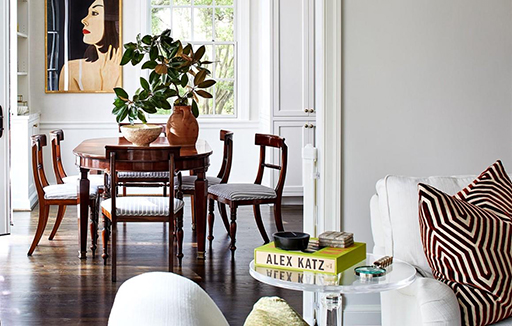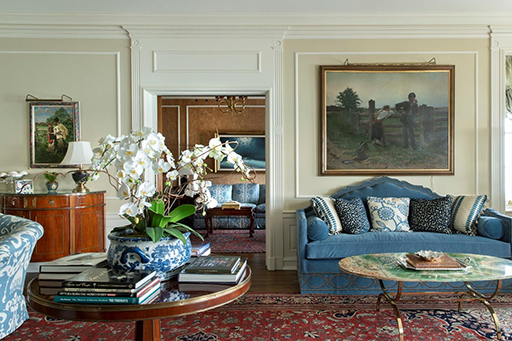Design Styles Defined
Throughout history, societies have developed unique types of interior design and architecture, reflecting local cultural, geographic, and economic forces. In the modern era, design styles have evolved at an unprecedented pace, and designers and architects consciously select from among these styles for their work. A design style can create a particular feeling for both a homeowner’s occupants and those observing it from the outside. A home’s style can also help it blend in with or stand out from its surroundings, such as the other buildings in the area and the natural environment.
However, given the different choices available for interior design styles, it can be challenging to find the right words to describe what you like. As experts in the field of design and interior architecture, Atchison Architectural Interiors would like to talk about the four main design styles to help you understand the differences between them. Moreover, the detail we’ve covered in this blog will help you understand each style in a way that it is easy for you to make a choice
1. Modern style

The modern style is the design and décor of the modernism movement, which began in the very late 1800s. It usually has styles from 1900 to 1950. Design from 1930s to the 1960s is considered “midcentury modern.” It focuses on a clean and simple design with no unnecessary adornment or another philosophy as modern design follows the notion of “less is more.” Modern style in architecture is characterized by its emphasis on form over ornament; appreciation of materials and structure instead of idyllic revival constructions; and the adroit, methodical use of space.
2. Contemporary style

What is referred to as contemporary style became popular in the 1970s and typically meant the period we’re living in at the moment. It was originally a blend of styles before it became recognizable on its own. The contemporary design borrowed elements from modernism and postmodernism. It also gathered ideas from many other styles, such as art décor, deconstructivism, futurism, and more. As each decade passes, the décor trends of the day will be considered contemporary. It is not necessarily tied to a specific period of time. Instead, it is an ever-evolving style that reflects what is happening today
3. Transitional style

The transitional style is used to describe spaces and structures that incorporate both classic forms and styles but also take some elements from modernism as well as contemporary design. It marries classic and contemporary style furnishings and finishes and carefully coordinates the mix, as well as other key elements of symmetry and consistency. This is the style for you if the classic design is too stuffy, but contemporary is too out of your comfort zone. Transitional is the perfect mix of classic elegance with contemporary lines and textiles. In addition, transitional interiors keep accessories to a minimum. It’s essential to let the furniture and the textiles do the talking.
4. Classic style

One of the most well-known styles in interior design is the classic style. Classic interiors use tables and chairs made from a dark wood that is ornately detailed. The classic design draws its inspiration from eighteenth and nineteenth-century England and France. This explains why it’s common to find expensive textiles like silk, velvet, and linen used everywhere, from upholstery to window treatments. This style also includes antiques, classic art, European décor, and historical décor, exemplifying elegance and comfort. Fabrics also feature a variety of different patterns. A few popular patterns include damask, florals, stripes, and plaids. Furthermore, classic homes also like to bring in the sense of glam with crystal chandeliers. Today, the younger homeowner will often call this style “classic” rather than classic and these furnishings “vintage” rather than antique.
If you are looking for a luxury interior architect and designer in Chicago, reach out to Atchison Architectural Interiors. You can give us a call at (773) 404-5533 or email us at jean@jeanatchison.com. We design classic and timeless spaces infused with a chic modern vibe. By merging classic and contemporary elements, the team creates fresh, sophisticated looks. Our interiors are elegantly balanced, carefully edited, and current with a thoughtful mix of furnishings, textures, finishes, and objects. Great interiors are a reflection of the personalities and lifestyles of their owners. By working closely with our clients, nationally recognized interior designer, Jean Atchison, shows us how a client’s vision can be achieved through thoughtfully conceived and carefully designed spaces. Whether the aesthetic is contemporary or classic, every one of our projects is marked by unparalleled design, easy sophistication, subtle detailing, and timeless materials. We offer residential and commercial interior design services across Chicago, Palm Beach and Naples, Florida, Vail and Aspen, Colorado, Lake Geneva, Wisconsin. To learn more about the services we offer, please click here. To get in touch with us, please click here.
JEAN ATCHISON

Atchison Architectural Interiors designs classic and timeless spaces infused with a chic modern vibe. By merging classic and contemporary elements, the team creates fresh, sophisticated looks. Their interiors are elegantly balanced, carefully edited, and current with a thoughtful mix of furnishings, textures, finishes, and objects.
Whether your aesthetic is contemporary or classic, nationally recognized interior designer, Jean Atchison, will work closely with you to bring your vision to reality and create a home that is uniquely your own.
